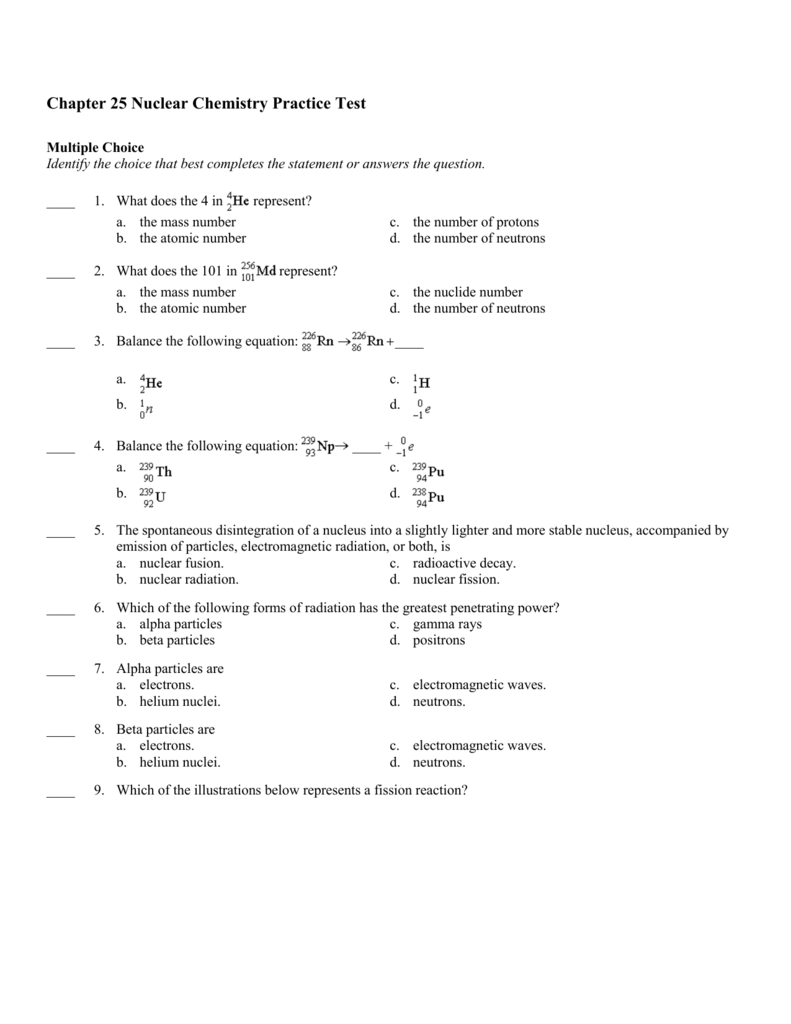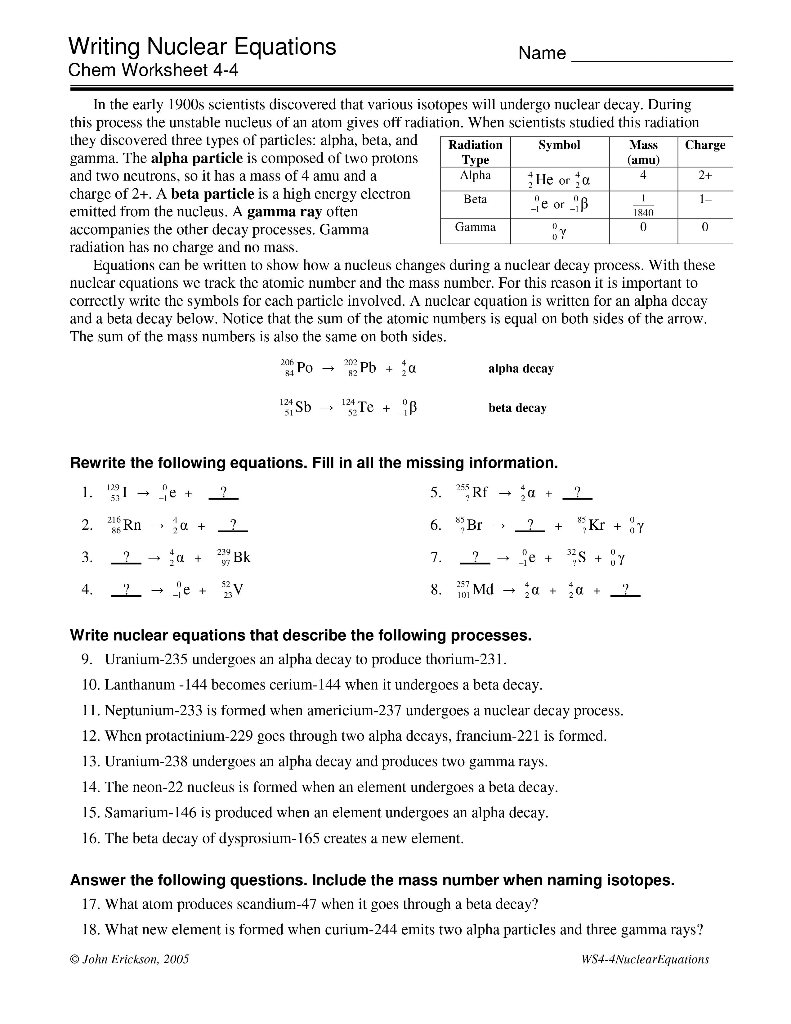

- Nuclear fusion and fission worksheet answers how to#
- Nuclear fusion and fission worksheet answers plus#
Thus, if you split a nucleus that is much larger than iron into smaller fragments, you will release energy because the smaller fragments are at a lower energy than the original nucleus. It turns out that the most tightly bound atomic nuclei are around the size of iron-56. If a nuclear reaction produces nuclei that are more tightly bound than the originals, then the excess energy will be released. The key is in how tightly the nucleons are held together in a nucleus. SEMF B(A,Z) a VA a SA2/3 a cZ2 A1/3 a A (N Z)2 A + (A) Prof. Indicate if the equation represents fission or fusion (circle one) 231 Pa 192 Ir + 91 77 Fission or fusion 244 Pu 94 59 141 Pr + Fission or fusion 3. Nuclear fission is a process in which a nucleus splits into two smaller nuclei. Fission and Fusion Expect a large amount of energy released in thefissionof a heavy nucleus into two medium-sized nuclei or in thefusionof two light nuclei into a single medium nucleus. : Complete the following fission and fusion nuclear equations. #""_5^10"B" + _2^4"He" → _7^13"N" + _0^1"n" # + energy 16 Products 30.00 45.00 Save 15.00 View Bundle Teaching your students about nuclear chemistry This bundle will cover it all This bundle contains five (5) detailed worksheets, notes, and assessments that will guide your students through an entire nuclear chemistry unit. Review with your students what they know about the three types of nuclear reactionsfusion, fission, and radioactive decay. Nuclear fusion is a process in which two nuclei join to form a larger nucleus. Materials to create three-dimensional models of nuclear reactions Procedures 1.

So the answer to the question “Which of the following statements correctly contrasts nuclear fusion and nuclear fission?” is (A) in nuclear fission, large nuclei split, while in nuclear fusion, small nuclei combine.Fusion and fission are similar in that they both release large amounts of energy. This means that the splitting of large nuclei must be nuclear fission.

During the combination of two small nuclei, the nuclei are fused together. But we need to know which one is fission and which one is fusion. So we have seen how large nuclei split and how small nuclei combine. The combination of two hydrogen nuclei to form helium occurs in the Sun. Use the knowledge you have gained this lesson to answer the following questions.
Nuclear fusion and fission worksheet answers how to#
understand fusion, including how to calculate energy produced in a fusion reaction.
Nuclear fusion and fission worksheet answers plus#
Combining nuclei requires much higher temperatures than splitting nuclei. from Web a 2022 report by the fusion industry association says fusion companies have declared over 4.7bn of private funding to date, plus an additional 117m in grants. It will also release three neutrons and nuclear energy.Īn example of two nuclei combining is the combination of two hydrogen nuclei to form a helium nucleus and nuclear energy. As uranium-236 is unstable, it will split into two smaller nuclei such as barium and krypton. Uranium-236 can be formed by bombarding uranium-235 with slow-moving neutrons. Uranium-236 is an example of an unstable isotope. Large nuclei split when they are unstable. We can see from options (A) and (B) that one of these processes involves large nuclei splitting and the other involves small nuclei combining. Atomic bombs are devices that start uncontrolled nuclear chain reactions. Nuclear fission Nuclear fission ID: 1792284 Language: English School subject: Physics Grade/level: 3. In an uncon-trolled nuclear chain reaction, the total energy release takes only fractions of a second. Nuclear fusion and nuclear fission are both processes which release a lot of energy. The fission of 1 kg of uranium-235, for example, yields an amount of energy equal to that generated in the explosion of 20,000 tons of dynamite. Or (B) in nuclear fusion, large nuclei split, while in nuclear fission, small nuclei combine. In nuclear fusion, two small nuclei fuse together to make a bigger nucleus. Which of the following statements correctly contrasts nuclear fusion and nuclear fission? (A) In nuclear fission, large nuclei split, while in nuclear fusion, small nuclei combine. In nuclear fission, a large nucleus splits into smaller nuclei and neutrons.


 0 kommentar(er)
0 kommentar(er)
